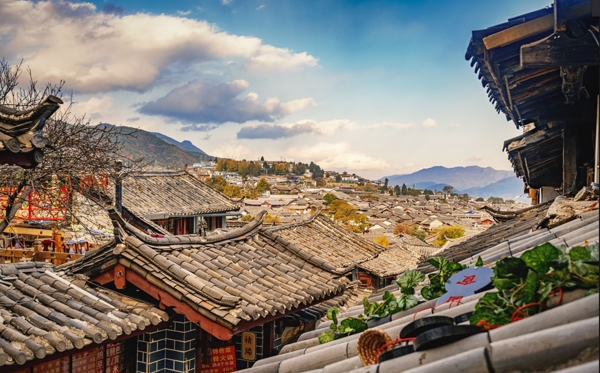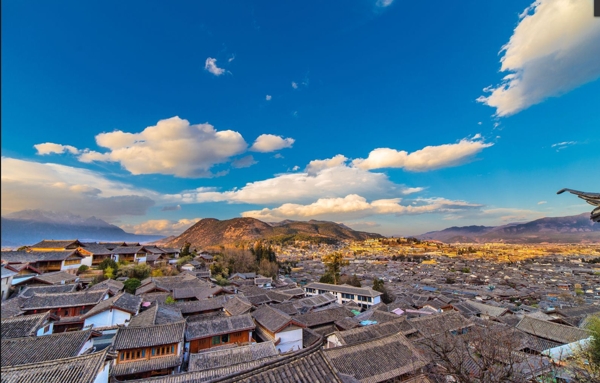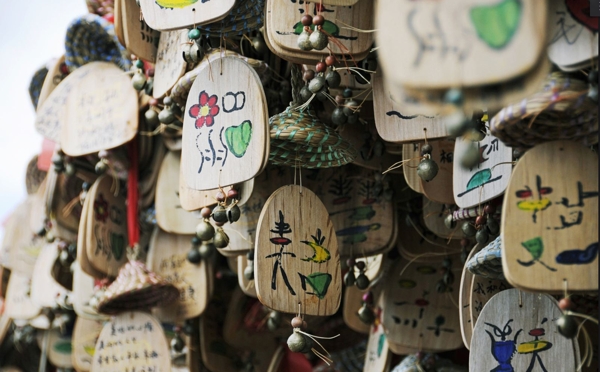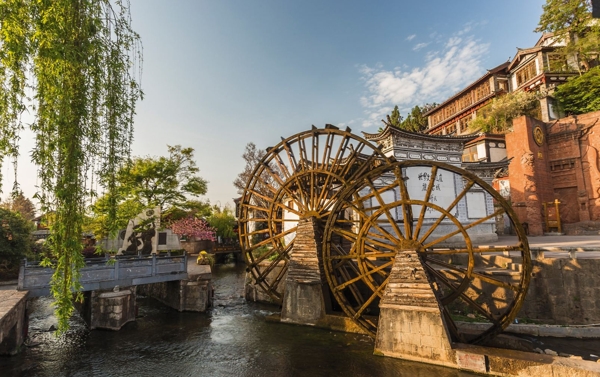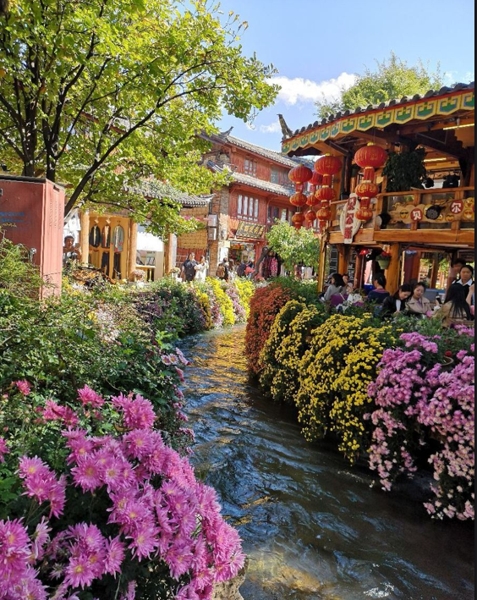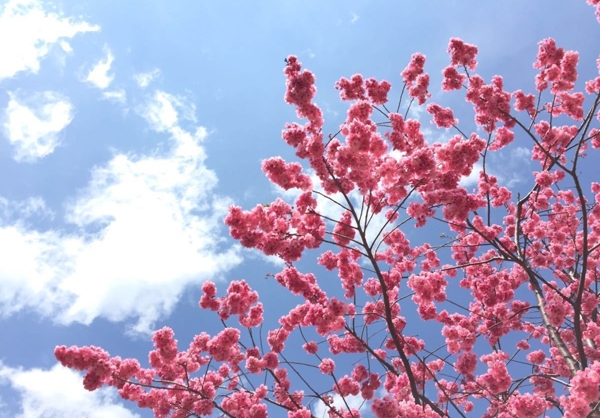Home > Attractions >
The Introduction of Lijiang
Exploring Lijang is like opening a Chinese jewel chest - each exquisitely crafted compartment leads to richer more dazzling sights.
Perched at bottom of the Himalayas and the Qinghai-Tibet Plateau, this remote town in southwest China's Yunnan Province is a show-stealer for its amazing landscape and rich culture. Nestled in a valley ringed with snow-capped mountains, springs, lakes and frothy rivers, nature's touch extends into Lijiang County. The Old Town (gucheng) is full of cobbled streets, crisscrossing canals, swaying willow trees and gaily-hued blossoms. Every so often a bridge stone. wooden, flat, arched, roofed - pops up and along it trundles local folk in traditional dress.
Over 22 different ethnic minorities have made Lijiang their home. Among them are the Lisu, Pumi, Bai, Yi, Tibetan, Miao and Naxi. People of Lijiang are like vibrant butterflies: cheerful, busy and visually stunning. The market squares and alleys are peppered with locals in their individual ethnic fashion,ornaments and hairstyles. Local customs, architecture, spiritual beliefs, language, arts and craft are influenced by ethnic diversity and are rich with symbolism and creativity.
Lijiang's ancient old city has preserved its charming antiquity despite the modern changes sweeping through China. Old style architecture and pathways were rebuilt along the original model after an earthquake in 1996 damaged sections of the town. In individual enclaves, pebbles and smashed tiles are arranged symbolically to denote happiness or good fortune Rooms are built beside running water for a soothing effect. Door and window sport decorative woodcarvings of phoenixes. Legends and nature. Pathways barely two shoulders wide are crammed by two-story shop-houses, inns or private residences all built in the traditional style. Cobbleston streets are free of vehicular nuisances and the maze of back alleys offers innumerable possibilities for shortcuts and scenic surprise.
Although the town grew from humble nomadic origins, there’s little that’s transitory or mercurial about Lijang. Several houses, streets, monasteries and bridges have been there since the Tang, Song, Ming and Qing Dynasties. At the heart of the old town is Square Street. Centuries ago it was the central bazaar where mountain tribes, Tibetan and Han traders and farmers briskly bartered yak butter, crossroad for trade continues to hum with mercantile activities, business is open every day. On sale are a variety of handicrafts, from homemade griddlecakes to hand picked tea leaves from Yunnan's hills.
Lijiang’s people adore learning and the arts. They re the bookkeepers of the ancient Dongba scripts. Called "sijiulujiu"in the Naxi language, meaning"signs on rock and wood, "these eloquent drawings depict the history of Naxi culture, their religious rites, folktales and legends. Over 20,000 volumes of Dongba sutra, painted on wooden tablets, are scattered around the world, but many are still lovingly preserved in Lijiang’s sacred monasteries. Amazingly, this one-of-its-kind pictographic language has not been simply locked away and forgotten. The Naxis deep appreciation for culture and their roots ensure that it is still used within the community today.
Perched at bottom of the Himalayas and the Qinghai-Tibet Plateau, this remote town in southwest China's Yunnan Province is a show-stealer for its amazing landscape and rich culture. Nestled in a valley ringed with snow-capped mountains, springs, lakes and frothy rivers, nature's touch extends into Lijiang County. The Old Town (gucheng) is full of cobbled streets, crisscrossing canals, swaying willow trees and gaily-hued blossoms. Every so often a bridge stone. wooden, flat, arched, roofed - pops up and along it trundles local folk in traditional dress.
Over 22 different ethnic minorities have made Lijiang their home. Among them are the Lisu, Pumi, Bai, Yi, Tibetan, Miao and Naxi. People of Lijiang are like vibrant butterflies: cheerful, busy and visually stunning. The market squares and alleys are peppered with locals in their individual ethnic fashion,ornaments and hairstyles. Local customs, architecture, spiritual beliefs, language, arts and craft are influenced by ethnic diversity and are rich with symbolism and creativity.
Lijiang's ancient old city has preserved its charming antiquity despite the modern changes sweeping through China. Old style architecture and pathways were rebuilt along the original model after an earthquake in 1996 damaged sections of the town. In individual enclaves, pebbles and smashed tiles are arranged symbolically to denote happiness or good fortune Rooms are built beside running water for a soothing effect. Door and window sport decorative woodcarvings of phoenixes. Legends and nature. Pathways barely two shoulders wide are crammed by two-story shop-houses, inns or private residences all built in the traditional style. Cobbleston streets are free of vehicular nuisances and the maze of back alleys offers innumerable possibilities for shortcuts and scenic surprise.
Although the town grew from humble nomadic origins, there’s little that’s transitory or mercurial about Lijang. Several houses, streets, monasteries and bridges have been there since the Tang, Song, Ming and Qing Dynasties. At the heart of the old town is Square Street. Centuries ago it was the central bazaar where mountain tribes, Tibetan and Han traders and farmers briskly bartered yak butter, crossroad for trade continues to hum with mercantile activities, business is open every day. On sale are a variety of handicrafts, from homemade griddlecakes to hand picked tea leaves from Yunnan's hills.
Lijiang’s people adore learning and the arts. They re the bookkeepers of the ancient Dongba scripts. Called "sijiulujiu"in the Naxi language, meaning"signs on rock and wood, "these eloquent drawings depict the history of Naxi culture, their religious rites, folktales and legends. Over 20,000 volumes of Dongba sutra, painted on wooden tablets, are scattered around the world, but many are still lovingly preserved in Lijiang’s sacred monasteries. Amazingly, this one-of-its-kind pictographic language has not been simply locked away and forgotten. The Naxis deep appreciation for culture and their roots ensure that it is still used within the community today.

